Touring Bikes Guide
Frame material
Frame materials can significantly impact the durability, weight, and price of a bike. The most common frame materials for touring bikes are steel, aluminum, titanium, and carbon fiber.
Steel frames are renowned for their strength and ability to handle heavy loads, making them ideal for long-distance touring. They offer a smooth ride due to their compliance and absorbency of road vibrations. Great options to consider include the Surly Long Haul Trucker and the Kona Sutra LTD. Aluminum frames, on the other hand, offer a lighter alternative without sacrificing strength. These frames tend to be more affordable and are often favored by budget-conscious riders. A highly recommended aluminum touring bike is the Co-op Cycles ADV 2.1. Titanium frames excel in durability and strength while offering a lightweight option, perfect for those seeking an excellent balance of comfort and performance. Kona Rove LTD and Ritchey Swisscross Disc are two remarkable titanium touring bikes in the market. Lastly, carbon fiber frames provide the ultimate lightweight option, perfect for riders seeking speed and efficiency. They are more expensive but deliver exceptional rigidity and vibration dampening. The Trek Domane SLR 7 and Cannondale SuperX Hi-MOD are two top-tier carbon fiber touring bikes to consider.
Through understanding the advantages and characteristics of each frame material, riders can select the one that best suits their needs and preferences for their ideal touring bike.
Frame size
The right frame size ensures that you can maintain a comfortable and efficient riding position for long periods of time, reducing the risk of fatigue and injury. Frame sizes typically vary according to your height, reach, and inseam measurement. For example, the Surly Long Haul Trucker offers frame sizes ranging from 42cm to 62cm, making it suitable for a wide range of riders. Another option is the Ridgeback Touring Bike, which provides frame sizes ranging from 49cm to 61cm. Remember, it's crucial to choose the correct frame size to maximize your riding experience and maintain optimal control and comfort.
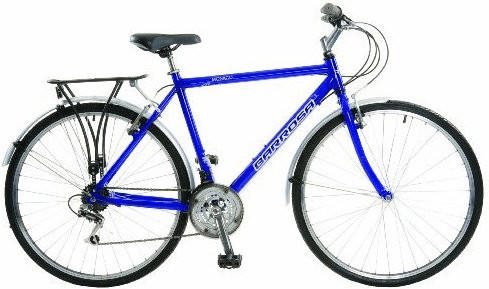
Suspension type
This will greatly impact your comfort and handling while touring. There are mainly two suspension types to choose from: rigid and suspension fork. Rigid suspension bikes, such as the Surly Long Haul Trucker and the Co-op Cycles ADV 1.1, do not have any suspension components. They offer a simpler design and lower maintenance, making them ideal for smooth roads and light loads. On the other hand, suspension fork bikes, like the Salsa Marrakesh and the Trek 520, feature a front suspension fork that absorbs shocks and vibrations, providing a smoother ride on rough terrain. These bikes are suitable for off-road adventures or carrying heavier loads as they distribute the weight more evenly and increase control.
Wheel size
This plays a crucial role in determining the bike's stability, performance, and suitability for different terrains. Standard touring bikes often come with 700c wheels, which offer a great balance of speed and efficiency on paved roads. For example, the Surly Long Haul Trucker is a popular choice among long-distance cyclists, featuring 700c wheels that ensure a smooth and speedy ride. On the other hand, if your tour involves off-road or rough gravel trails, you may opt for a bike with 26-inch wheels, such as the Salsa Fargo GX 2x10 designed for rugged adventures. These smaller wheels provide enhanced maneuverability and durability on uneven surfaces. Finally, if you prefer an ultra-smooth ride or plan on primarily riding on unpaved surfaces, consider a touring bike with 650b wheels, like the All City Gorilla Monkey Zirconium known for its responsive and comfortable performance. These intermediate-sized wheels strike the perfect balance between speed and stability, making them a versatile choice for various terrains.
Weight
A lighter bike allows for faster acceleration, smoother handling, and less strain on your body. For those seeking a lightweight option, there are several standout choices available. The Cannondale Treadwell is a popular touring bike weighing in at just under 25 pounds. Equipped with a lightweight aluminum frame and carbon fiber forks, it offers optimal balance and stability without compromising on durability. Another worthy consideration is the Specialized Diverge E5 Elite. Weighing in at a mere 22 pounds, this touring bike features a robust yet lightweight aluminum frame and assertive geometry that ensures agility and control on various terrains.
Number of gears
The number of gears determines the range of speeds you can comfortably ride in different terrains. For example, Surly Long Haul Trucker offers a wide range of gearing with its Shimano Deore XT drivetrain, featuring 27-speeds. This allows for effortless climbing on steep inclines and faster speeds on flat roads. Another great option is the Brooks B17 Saddle, which also provides a 27-speed Shimano drivetrain for smooth gear changes and versatile performance. Both of these bikes offer ample gear options for tackling various terrains and ensuring a comfortable ride throughout your touring adventures.
Gear system type
Having a well-designed gear system can greatly enhance your cycling experience and make climbing hills or cruising on flat terrain easier and more efficient. One popular gear system type is the Shimano Deore XT M8000, which offers a wide gear range and smooth shifting. Another excellent choice is the SRAM GX Eagle, known for its 1x12 drivetrain that eliminates the front derailleur and provides a simple and reliable gear system. Additionally, the Rohloff SPEEDHUB 500/14 is a noteworthy option for those looking for a gearbox-driven gear system that requires minimal maintenance and offers an impressive 14 gears. It's important to consider your riding style and terrain when selecting the gear system, as certain systems may be better suited for long-distance touring while others may excel in off-road or mountain biking scenarios.
Brake type
There are three main types to choose from: rim brakes, mechanical disc brakes, and hydraulic disc brakes. Rim brakes, such as the Shimano Tiagra BR-R451, function by applying pressure to the rim of the wheel to slow down or stop the bike. They are durable, affordable, and relatively easy to maintain. Mechanical disc brakes, like the TRP Spyre, use a caliper to push the brake pads onto a rotor attached to the wheel hub. This type of brake provides better stopping power in wet conditions and requires less effort to engage compared to rim brakes. Hydraulic disc brakes, such as the Shimano Ultegra ST-R8020, offer even greater stopping power and improved modulation. They utilize hydraulic fluid to transfer pressure from the brake lever to the caliper, resulting in consistent and reliable braking performance. Overall, the choice between these brake types will depend on your personal preferences and the intended use of the touring bike.
Group 1: Rim Brakes
- Shimano Tiagra BR-R451
- Tektro R559 Long Reach Caliper
Group 2: Mechanical Disc Brakes
- TRP Spyre
- Avid BB7 Road SL
- Shimano GRX BR-RX807
Group 3: Hydraulic Disc Brakes
- Shimano Ultegra ST-R8020
- SRAM Force eTap AXS HRD
- TRP Hylex RS
Handlebar style
There are several options available, each with its own advantages. Drop bars, for example, are the traditional choice for long-distance touring. The Salsa Vaya is a great example of a touring bike with drop bars, featuring a comfortable hand position for long hours on the road. Another handlebar style to consider is the flat bar, which is popular for off-road touring. The Fuji Touring Disc is a well-regarded option in this category, designed for off-road adventure and offering excellent control and stability. Lastly, butterfly bars, also known as trekking bars, provide multiple hand positions to reduce fatigue on long rides. The Surly Long Haul Trucker is a highly recommended touring bike with butterfly bars, offering unparalleled comfort and versatility.
Saddle type
There are various saddle types available, and each offers different features and benefits. One popular option is the Brooks B17 Standard saddle, known for its high-quality leather material and wide shape that provides exceptional comfort and support during long rides. Another great choice is the Terry Fly Cromoly Gel saddle, which is specifically designed for women with its wider rear end and cutout design to reduce pressure on sensitive areas. Additionally, the ISM PR 2.0 saddle is worth considering for those seeking optimal blood flow and reduced numbness, featuring a split design that takes pressure off the perineal area. With these options for different needs, riders can choose the saddle that best suits their comfort preferences.
Pedal type
There are generally two types to choose from: platform pedals and clipless pedals. Platform pedals are the most common and affordable option, providing a large surface area for your foot and allowing you to wear any type of shoe. A great example of a touring bike with platform pedals is the Surly Long Haul Trucker, which comes with durable Wellgo platform pedals that provide excellent grip and support. On the other hand, clipless pedals are designed to attach to special cycling shoes using a cleat system, offering maximum power transfer and efficiency. For those interested in clipless pedals, a top recommendation is the Co-Motion Americano, equipped with *Shimano SPD pedals, which are known for their reliability and easy entry/release capability.
Tire type
The right choice of tires can greatly enhance the performance and durability of your bike during long-distance trips. There are various options available in the market, each with its own pros and cons. For riders looking for puncture-resistant tires, the Continental Touring Plus Reflex could be an ideal choice. This tire features a high-wear tread compound with puncture protection technology, providing increased durability and reduced risk of flats. Another option to consider, especially for off-road adventures, is the Schwalbe Marathon Mondial Evolution Double Defense Touring Tire. With its "Double Defense" technology, this tire is equipped with two layers of puncture protection and offers excellent grip on both wet and dry terrains.
In the segment of tubeless tires, the Vittoria Voyager Hyper stands out for its lightweight construction and low rolling resistance, making it perfect for fast-paced tours. Riders can also opt for the versatile WTB All-Weather Touring Tire, which features a deep tread pattern for reliable traction on various surfaces, while also providing excellent durability and puncture protection. Whether you prioritize speed, durability, or all-terrain capability, there are numerous touring tire options available that can cater to your specific needs and preferences.
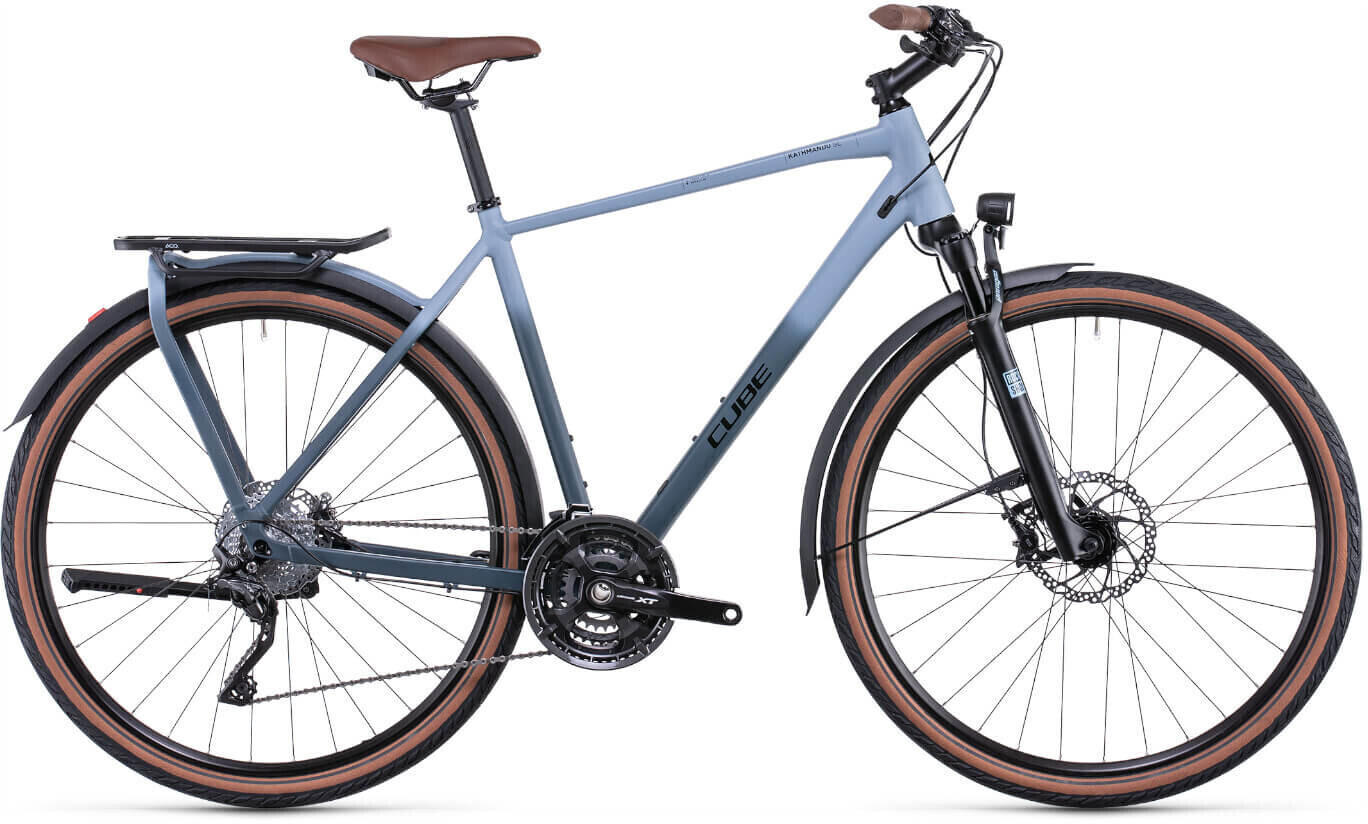
Tire width
The right tire width will depend on the type of terrain you plan to ride on. For mostly paved roads and light off-road trails, narrower tires in the range of 28-32mm width, such as the Continental Tour Ride or Schwalbe Marathon tires, are suitable. These tires offer low rolling resistance and better efficiency on smooth surfaces.
On the other hand, if your tour includes rougher terrain or gravel roads, wider tires are recommended. These offer improved stability and traction. Tires in the range of 38-42mm width, like the Panaracer GravelKing or WTB Riddler, are popular options for mixed terrain touring. These wider tires provide increased shock absorption and a more comfortable ride on uneven surfaces.
For extreme off-roading and bikepacking adventures, fat tires with widths of 2.1 inches or more are suitable. The Surly ECR and the Specialized Fuse are examples of bikes designed for this kind of touring. These bikes are equipped with wide 3-inch tires, capable of providing ample traction and floatation on loose trails or sandy beaches.
Remember, the tire width is just one aspect to consider when choosing a touring bike, but it can greatly impact your ride comfort and performance depending on the type of terrain you will be exploring.
Front derailleur type
There are two main types of front derailleurs: traditional and compact. Traditional front derailleurs have a greater range of gears, making them suitable for steeper climbs and heavier loads. They often have a triple chainring set up, such as the Shimano Ultegra R8000 Front Derailleur, which provides a wide gear range of 50/39/30T. This is ideal for long-distance touring or hilly routes where gear variety is key. On the other hand, compact front derailleurs are designed for speed and efficiency on flatter terrains. One example is the SRAM Force eTap AXS Front Derailleur, which features a compact chainring setup of 48/35T, allowing for a smoother pedaling experience on less challenging routes. Ultimately, the choice between traditional and compact front derailleurs depends on your specific needs and cycling preferences.
Rear derailleur type
The rear derailleur is responsible for shifting the chain between different gears, allowing the rider to adjust their speed and pedal efficiency. There are various types of rear derailleurs available on the market, each offering different features and benefits.
One popular and reliable option is the Shimano Deore XT RD-M8000 Rear Derailleur. This derailleur features Shimano's Shadow RD+ technology, which provides chain stability and reduces chain slap, even on rough terrains. It has a wide gear range compatibility, accommodating cassettes with up to 46 teeth. Another highly recommended rear derailleur is the SRAM Force 1 X-Horizon Rear Derailleur. Specifically designed for 1x drivetrains, this derailleur ensures smooth and precise shifting while eliminating chain drops and slap. It also incorporates SRAM's Roller Bearing Clutch technology, delivering a quieter ride and enhanced chain security.

It's essential to choose a rear derailleur based on your specific requirements and riding preferences. Other well-regarded options on the market include the Shimano 105 RD-R7000 Rear Derailleur for its affordability and smooth shifting performance, and the premium Campagnolo Super Record EPS Rear Derailleur for its lightning-fast shifting and high precision capabilities.
Crankset type
The crankset is the combination of the chainrings and crank arms, and it plays a crucial role in your cycling performance and shifting experience. One popular type of crankset is the compact crankset, which usually consists of a 50-tooth large chainring and a smaller 34-tooth inner chainring. This combination provides a wide range of gear options, making it ideal for climbs and loaded touring. A great example of a touring bike with a compact crankset is the Specialized Sequoia Elite, which offers smooth and efficient shifting, thanks to its Shimano 105 compact crankset. Another option to consider is a triple crankset, which includes three chainrings. Triple cranksets like the one found on the Trek 520 offer an even greater range of gears, making it suitable for heavy loads or hilly terrains.
Crankset size
The crankset plays a crucial role in determining the bike's gearing ratio, which directly affects how easily you can pedal uphill or maintain speed on flat terrain. The ideal crankset size for touring will depend on your personal fitness level and the terrain you plan on riding. For those who are new to touring or prefer a more leisurely pace, a compact crankset with smaller chainrings like the Shimano Ultegra FC-6800 or the SRAM Rival 22 would be a great choice. These cranksets typically feature a tooth ratio of 50/34, making it easier to climb steep hills. On the other hand, if you are a more experienced or stronger rider and anticipate tackling more challenging terrain, a standard crankset with larger chainrings such as the Shimano Dura-Ace R9100 or Campagnolo Record Ultra-Torque with a 52/36 tooth ratio would provide a higher top end gearing for increased pedaling efficiency on flatter surfaces. Remember to consider your own abilities and the type of terrain you'll be riding on when selecting the right crankset for your touring bike.
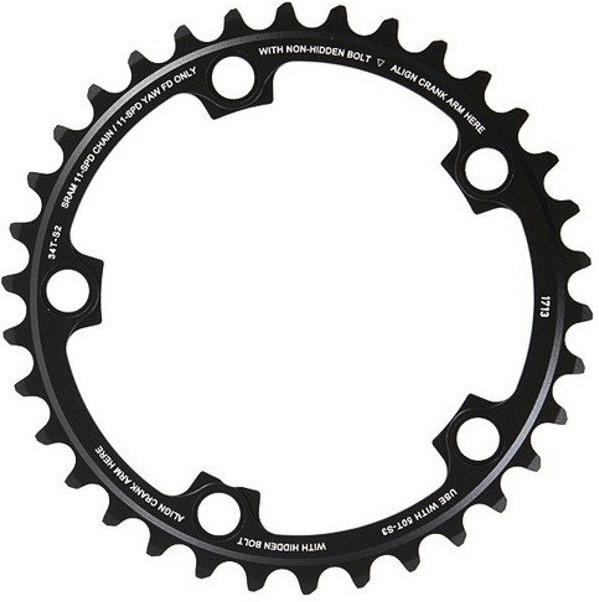
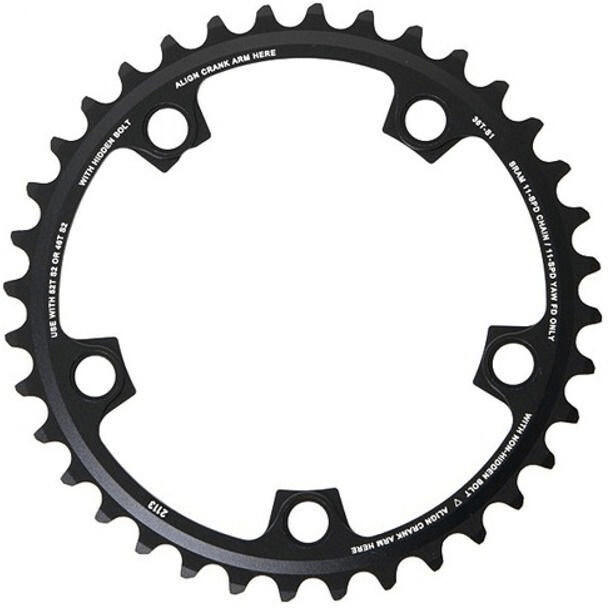

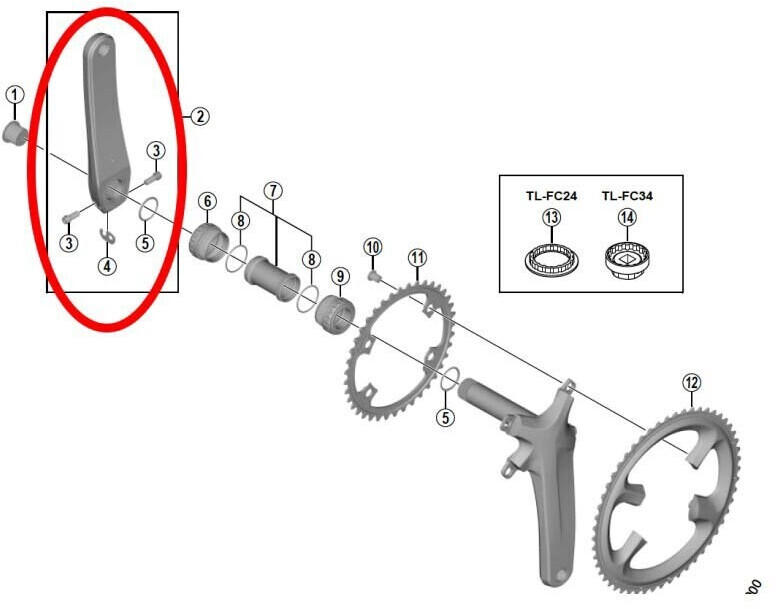
Fork type
The fork plays a crucial role in determining the bike's suspension, stability, and overall ride quality. There are several types of forks available in the market, each with its own advantages and disadvantages.
One popular option is the rigid fork, which does not have any suspension. Rigid forks offer excellent efficiency and are typically lighter than their suspension counterparts. They are a great choice for riders who plan to predominantly ride on smooth and paved roads. A top recommendation for a rigid fork touring bike is the Surly Disc Trucker, featuring a rugged Cromoly steel frame and fork, providing durability and stability on long journeys.
If you prefer a more comfortable ride and the ability to tackle rough terrain, you may opt for a suspension fork bikes. These forks incorporate a suspension system that absorbs shocks and vibrations, enhancing comfort and reducing fatigue. A well-regarded option in this category is the Trek 520, equipped with a travel-ready alloy fork with a suspension preload adjustment feature, allowing for customizable compression. This bike is perfect for riders who anticipate encountering varied terrain during their tours.
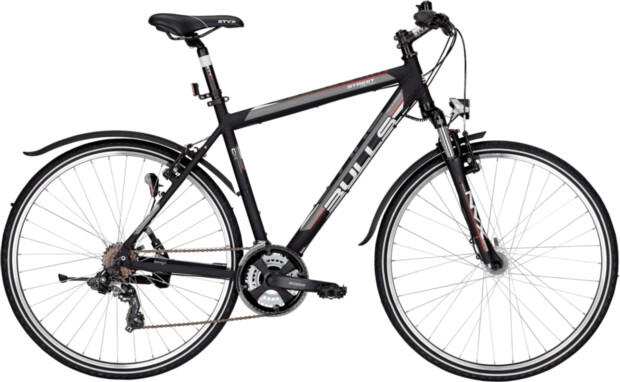
Fork material
The material used for the fork plays a crucial role in determining the bike's performance, comfort, and durability. There are several options available on the market, including steel, carbon fiber, and aluminum forks.
Steel forks are known for their strength and reliability. They provide a smooth and comfortable ride, absorbing vibrations and shocks from rough terrains. A popular example of a touring bike with a steel fork is the Surly Long Haul Trucker.
On the other hand, carbon fiber forks offer excellent lightweight properties without compromising on strength. These forks are generally found on high-end touring bikes, such as the Specialized Sequoia Elite.
Lastly, aluminum forks are lighter than steel but not as lightweight as carbon fiber. They provide a good balance between strength and weight. The Cannondale Topstone Sora is a great example of a touring bike with an aluminum fork. Depending on your preferences and specific touring needs, each fork material has its advantages and drawbacks.
Stem length
The stem is the component that connects the handlebars to the bike's frame and a suitable length plays a crucial role in achieving an optimal riding position. The right stem length will help prevent strain on the neck, shoulders, and back, ensuring that you can maintain a comfortable riding position for long hours on the road.
When exploring the market for touring bikes with different stem length options, several notable products stand out. For those seeking a shorter stem length of around 70-80mm, the Surly Long Haul Trucker offers a sturdy steel frame, accommodating a comfortable and reliable ride. On the other hand, if you prefer a longer stem length in the range of 90-100mm, the Trek 520 Disc presents a durable option with a lightweight aluminum frame and a variety of sizes available. Both bike options provide adjustable stems, allowing riders to fine-tune their stem length to match their preference for an optimized touring bike experience.
Handlebar width
Handlebar width directly affects your comfort, control, and overall riding experience. Firstly, it's crucial to select a handlebar width that matches your shoulder width. Wider handlebars provide more stability, especially when fully loaded with panniers. On the other hand, narrow handlebars offer better aerodynamics and are more suitable for those looking for a sportier ride.
For those seeking wider handlebars, the Salsa Cowchipper Handlebars is an excellent option. These 46cm wide handlebars provide ample grip and control, allowing riders to tackle challenging terrains with ease. Alternatively, bikers seeking narrower handlebars can opt for the Specialized Hover Alloy Handlebar. With a width of 42cm, these handlebars prioritize aerodynamics without sacrificing functionality. Both options cater to different preferences for handlebar width in the touring bike market.
Brake lever type
When it comes to touring bikes, choosing the right brake lever type is crucial to ensure both safety and comfort on long-distance rides. There are two primary types to consider: mechanical disc brakes and hydraulic disc brakes.
Mechanical disc brakes, such as the Avid BB7 MTB Mechanical Disc Brake, offer reliable stopping power and are relatively easy to maintain. These brakes use a cable to actuate the brake pads and provide consistent performance in various weather conditions. They are a popular choice for touring bikes due to their durability and adjustability.
On the other hand, hydraulic disc brakes, like the Shimano MT200 Hydraulic Disc Brake Set, provide unparalleled stopping power and require minimal effort at the brake lever. With hydraulic fluid transferring the force from the lever to the brake pads, these brakes maintain consistent performance regardless of cable stretch. They are ideal for riders seeking precision braking and enhanced control.
It's worth noting that some touring bikes also come equipped with rim brakes, which include the traditional caliper and cantilever brakes. While these are lighter and offer simpler servicing, they tend to have less stopping power compared to disc brakes, making them less suitable for long-distance touring.
Here are a few examples of touring bikes that come with different brake lever types:
Mechanical Disc Brakes:
- Kona Sutra: This touring bike features TRP's Spyre C mechanical disc brakes for reliable stopping power and ease of maintenance.
- Surly Long Haul Trucker: Equipped with Avid BB7S mechanical disc brakes, this bike ensures strong and consistent braking performance even in wet or muddy conditions.
Hydraulic Disc Brakes:
- Trek 520 Disc: This touring bike boasts a Shimano hydraulic disc brake system for exceptional stopping power and modulation.
- Giant ToughRoad SLR GX: With TRP Spyre-C hydraulic disc brakes, this bike provides consistent braking performance for off-road adventures and long-distance touring.
Remember, selecting the right touring bike is not just about the brake lever type; other crucial factors such as frame material, tire clearance, and gear range also need to be considered to find the best fit for your touring needs.
Brake lever position
The position of the brake levers can greatly impact comfort and control while riding. Look for touring bikes that have brake levers designed to be easily accessible and adjustable. For example, the Trek 520 Disc features ergonomic brake levers that can be positioned to suit various hand sizes and riding preferences. Additionally, the Surly Long Haul Trucker has brake levers strategically placed for easy reach.
Some other options to consider include touring bikes with integrated shifters and brake levers, known as "brifters," such as the Kona Sutra LTD. These brifters combine the convenience of shifting gears with the immediate accessibility of the brakes. On the other hand, some touring bikes, like the Salsa Marrakesh, feature bar-end shifters that are separate from the brake levers. These bar-end shifters can offer a simpler and more reliable shifting system, providing a timeless feel for the purists. Overall, it's important to choose a touring bike with brake levers that provide optimal comfort and control to enhance your touring experience.
Bike stand availability
A bike stand is a helpful feature that allows you to prop up the bike and keep it upright when not in use. This is particularly useful during extended stops or when making adjustments or repairs.
There are several touring bikes on the market that come with built-in stands or have provisions for attaching a stand. One example of a touring bike with a built-in stand is the Surly Long Haul Trucker. This bike features a sturdy and adjustable kickstand, making it easy to prop the bike up securely. Another option is the Salsa Marrakesh, which comes with a mount for a rear kickstand for added stability when parked.
For those who prefer a more portable option, the Topeak Flashstand RX is a popular choice. This lightweight and compact stand is designed specifically for road and touring bikes, making it easy to carry and set up wherever you may need it. Overall, having a bike stand on your touring bike can greatly enhance your cycling experience by providing convenience and ease of use.
Front light type
The front light is crucial for visibility, especially during low-light conditions or at night. There are three popular types of front lights commonly used on touring bikes: halogen, LED, and dynamo-powered lights.
Halogen lights are cost-effective and provide a bright beam of light. However, they tend to consume a lot of power and can drain the battery quickly. An example of a halogen front light is the CygoLite TridenX LED Light, which offers a powerful 1100-lumen beam.
LED lights, on the other hand, are energy-efficient and provide long-lasting illumination. They are available in various brightness levels and beam patterns. A popular LED front light option is the Light & Motion Urban 1000 FC Barbell Pays, which emits a high-visibility 1000-lumen beam and features an easy-to-mount design.
Alternatively, some touring bikes come equipped with a dynamo-powered front light, which is integrated into the bike's hub or wheel. These lights are self-powered as they generate electricity while riding. Dynamo lights provide a consistent beam without worrying about batteries or recharging. One such example is the Luxos U Lumotechnic, a high-quality headlight with a built-in USB charger for charging electronic devices while touring.
Rear light type
One popular choice is the Cygolite Hotrod 50 which offers a high-intensity LED light with 50 lumens of brightness, ensuring optimal visibility for the rider. It also features a light strip design, offering a wide-angle visibility of up to 240 degrees. Another option is the CatEye Rapid X3 which boasts a powerful rear light with 150 lumens. It comes with multiple lighting modes, including rapid flash, pulse, constant, and high-flashing, allowing riders to choose the most suitable setting for their needs. The CatEye Rapid X3 is also USB rechargeable, making it convenient for touring cyclists. Other similar products in this category include the Lezyne Strip Drive 150 and the `Bontrager Flare R'.
Reflectors availability
Reflectors are essential for ensuring visibility and safety, especially during nighttime or low-light conditions. Look for touring bikes that come with front and rear reflectors, as well as reflectors on the pedals. For example, the Trek 520 is a renowned touring bike that includes 360-degree reflective elements to enhance visibility after dark. Another option is the Surly Long Haul Trucker, which also features reflective details on various parts of the bike, including the frame, pedals, and tire sidewalls. Opting for a touring bike that includes reflectors will provide an extra layer of safety and peace of mind during your adventures.
Pannier rack availability
Pannier racks are essential for long-distance trips as they provide a sturdy and convenient way to carry your gear. Some bikes come pre-equipped with a pannier rack, saving you the hassle of purchasing and installing one separately. For example, the Trek 520' is a popular touring bike that comes with integrated front and rear racks, allowing you to easily attach panniers and carry up to 55 pounds of luggage. Another option is theSurly Long Haul Trucker', which also features dedicated mounting points for a pannier rack and can accommodate heavy loads thanks to its strong chromoly steel frame. These bikes are suitable for cyclists seeking a complete touring package straight out of the box.
Fender availability
Fenders are essential for keeping you and your bike clean and dry in rainy or muddy conditions. Some touring bikes come pre-fitted with fenders, while others require you to purchase them separately. For example, the Giant ToughRoad SLR GX is a touring bike that comes with fenders already installed, providing convenience and peace of mind for riders who frequently encounter wet conditions. Another option is the Trek 520, a classic touring bike that does not come with fenders but has fender mounts, allowing you to easily attach your preferred fenders. Additionally, for riders seeking a more affordable option, the Fuji Touring bike is a great choice as it comes equipped with both front and rear fenders straight from the factory.
Mudguard availability
Mudguards are essential for touring bikes as they offer protection against mud, water, and debris, keeping you and your belongings clean and dry during your travels. There are several touring bikes on the market that come with mudguards included, providing you with convenience right from the start. For instance, the Surly Long Haul Trucker is a reliable touring bike that features full fenders, ensuring excellent coverage and protection. Another option to consider is the Trek 520, which comes with Bontrager touring fenders that provide a perfect fit and sturdy construction. These bikes are a part of a segment of touring bikes that prioritize functionality and durability, making them excellent choices for adventurous travelers.
Suspension lockout availability
Suspension lockout allows you to switch between a fully active suspension for rough trails and a rigid suspension for smooth roads, pavement, or climbs. This feature enables better efficiency and power transfer when it's not necessary to absorb bumps and shocks.
For those looking for a touring bike with suspension lockout, the Salsa Journeyman Apex 1 650 is a great option. Equipped with a SR Suntour NRX suspension fork, it offers a suspension lockout feature allowing you to easily transition from bumpy off-road conditions to smooth rocky paths. Another option to consider is the Specialized Diverge Comp E5 which boasts a Future Shock suspension system with a lockout knob. This allows riders to choose the level of suspension comfort they desire based on the terrain they are traversing, providing a more efficient and enjoyable touring experience.
Bottle cage availability
This feature allows you to conveniently carry water or other beverages during long rides, especially in hot weather. Some bikes, such as the Surly Long Haul Trucker, come with multiple bottle mounts on the frame, allowing you to carry multiple bottles at once. This is particularly useful for those planning on traveling in areas where water may be scarce. Other touring bikes like the Salsa Marrakesh also come with a dedicated third water bottle cage on the underside of the downtube. This additional mount can be used to carry a larger water bottle or even a fuel canister for longer trips. It's worth noting that some bikes, like the Co-Motion Pangea, come with the bottle cage as optional accessories that can be added to the bike at an additional cost.
Quick release availability
Having quick release mechanisms on your bike can be incredibly convenient, allowing for easy and tool-free adjustments to your seat height, handlebar position, and even wheel removal for transportation. Several high-quality touring bikes on the market offer quick release options. For example, the Surly Long Haul Trucker is a popular option that features a quick release seatpost clamp for quick and hassle-free adjustments. Another option is the Trek 520, which incorporates a quick release seatpost binder bolt for easy seat height adjustments on the go. These bikes also come with quick release wheel skewers, making it a breeze to remove and install your wheels when needed.
Electric assistance availability
Electric touring bikes are equipped with a battery-powered motor that provides an extra boost of power, making long rides and uphill climbs more manageable and enjoyable. For those seeking an electric touring bike, there are several options available in the market. In the mid-range segment, the Trek Domane+ ALR 4 offers a lightweight aluminum frame coupled with a high-torque Bosch Performance Line Speed motor, providing a maximum speed assistance of up to 28 mph. In the higher-end segment, the Specialized Turbo Creo SL Expert is a top-tier option with its lightweight carbon fiber construction, impressive range of up to 80 miles, and a powerful Specialized SL 1.1 motor that seamlessly integrates into the frame for a sleek aesthetic. These are just a few examples of the wide range of electric touring bikes available, catering to different budgets and preferences.
Price
It is essential to determine the budget that fits your needs and preferences. In the price range of $500 to $1,000, there are several noteworthy touring bikes available. For instance, the Fuji Touring Bicycle is a popular option in this price range. It features a durable chromoly steel frame, offering strength and stability during long rides. Additionally, the Kona Sutra Touring Bike is a great choice known for its versatility and reliability. Equipped with a butted Cromoly frame and convenient disc brakes, it ensures optimal control and handling on different terrains. On the higher end of this price segment, the Surly Long Haul Trucker stands out with its high-quality components, including a chromoly frame and puncture-resistant tires, making it a reliable companion for long-distance adventures.
Variety of brands
Different brands offer unique features and designs that can greatly impact your touring experience.
One popular brand known for its excellent touring bikes is Surly. Their bikes are built with durable steel frames that provide the stability and reliability needed for long-distance rides. Surly's range of touring bikes, such as the Long Haul Trucker and Disc Trucker, are equipped with sturdy components and have ample mount points for racks and fenders. However, some riders find Surly bikes to be on the heavier side due to their steel frames.
For those looking for an option with a lightweight frame, Trek offers a great range of touring bikes. Their 520 touring bike is constructed with a lightweight aluminum frame, making it easier to climb hills and maneuver. Trek bikes also come with a wide array of gears to accommodate various terrains. However, some riders note that Trek bikes can be pricey compared to other brands.
It's important to research and compare the specifications and features of different touring bike brands to find the one that best suits your needs and preferences.